Hello! Welcome to this special piece which is a summary and a sneak peek into 5 ways to do Porter’s five forces analysis.
- Structure Conduct Performance Paradigm
This framework draws on the structure, conduct, and performance of the industry to focus on the attributes of each of the forces that can create competition and affect profitability. When looking at how the structure of an industry affects profitability we can use the attributes of industry structure to extract information about the long-lasting effects of the industry to identify arenas of innovation.
The point of identifying arenas of innovation is to take advantage of an environment that has the capabilities to develop innovative technologies that contribute to the entire industry value chain. Aiming to contribute to the industry as a whole and not just own firm benefit could create derived dependencies. So what innovation could cause industry standards to evolve? If a majority of the five forces working against industry profitability are high, chances are innovation within the industry is too. In these environments, firms are forced to redesign their processes, reconfigure their business models, and find ways to differentiate in a way that creates improved products/services to best satisfy critical customer criteria.
How can we exploit industry competencies in competitive environments to create products that can be adopted by both customers and the competition?
To extract this information you will have to analyze the structural attributes of an industry.
A great example of how the effects of the structure, conduct, and performance paradigms enable certain industries to have specific attributes is.
Why the world’s top companies love Indian CEOs
Alphabet, Microsoft, Deloitte, IBM, and countless other multinational businesses and some of the world’s most innovative businesses love Indian CEOs and it all comes down to the structure of Indian education. India’s education system is so competitive that if you manage to get into 1 of the top educational institutes you’ll have the confidence to handle America’s top universities and later, lead to running some of the world’s top companies.
India’s outbound student mobility rate is only 0.9 % so you can see now how competitive this arena actually is. Furthermore, the students that do make it abroad are either, related to elite Indian families or are absolute scholars getting scholarships to the world’s top institutions.
This competitive behavior among Indian students comes from specific structural standards of the Indian education system. One of these structural standards is that of The Indian Institute of Technology. This institute has such high entrance requirements that even some of the UK’s and USA’s education institutes seem to be modest by comparison. Due to the current political landscape and a decline in H-1B visas, you can expect this arena to become more competitive over the coming decades with even more top CEOs coming out of India to run Asian, European, African, and America’s greatest companies.
As the SCPP states that the structure of a market determines firm conduct and how firms conduct themselves in the arena determines how profitable the industry is, we can use this framework to draw out competitive capabilities and get creative with them. What we aim to do with structure, conduct, and performance in this teaching is taking a new perspective to it so that these tried and tested frameworks remain a part of corporate strategy and continue to be used in boardrooms around the globe.
Let’s take a look at the structure of the Indian education system and identify opportunities that companies, marketers, and entrepreneurs can take advantage of.
Structure of the Indian Education System
Number of buyers
Product differentiation
- High number of students/buyers
- Highest entry requirement standards for elite institutions
- High number of English medium private schools
Conduct Of the Indian Education System
Product choice
Product design
- Differentiated products between government, private and online institutions
Performance Of the Indian Education System
Profitability
Growth
- Highly profitable
- Growing need for new products
Overview of the effect of the structure of the Indian education arena
Due to a growing population, lack of jobs, poverty, and continued corruption within the country, there is a high demand for quality education and products that complement this industry by enabling the masses to access it. There is also a high intensity of competition within academia and an opportunity for innovation.
Using the technological performance frontier and structure conduct to identify areas of innovation
Having analyzed the SCPP of the Indian Education system. What we are teaching here is a way of thinking that aims to take advantage of knowing the attributes of the industry to identify arenas of innovation. So when looking at the Indian education system we can see many areas of the landscape where the opportunity lies for entrepreneurs to invest in innovation within the education sector. Innovation in such a great landscape is worth more than merely setting up a business and introducing differentiated products and services. Innovation within the education system can allow for a billion, trillion-dollar business. An innovative initiative that could come from this kind of industry structure is AI education which can be accessed by the masses and democratizes education for all.
So what this AI can do is, teach subject matter expertise and learn to know if the student is proficient enough or not in a subject to classify the student as an expert ready for the working world. With the arena of Indian education being the way that it is. This kind of product could be produced here and spread to the world. The reason being is the sheer amount of data the AI can collect from having such a high population with over 200 million citizens under the age of 30.
The Indian education system is also designed so that students learn everything from physics to engineering at a very young age. This AI platform can be introduced at a primary education level to learn and collect data on a variety of subjects and teach students at a more basic level so that the platform can be perfected before introducing it as a tool for higher education. Furthermore, due to poverty and a lack of jobs, a mindset has been developed over the years that in engineering and IT, they will have secure jobs. This pursuit of advanced subject matter expertise within such a large population has led to the country’s adoption of technology and coding proficiency being the greatest in the world. As one of the most IT literate countries in the world, India is known as the ‘ land of developers ‘ with over 5.5 million of them.
Having said this, India is the perfect landscape and arena for the innovation and adoption of technological-based education tools based on the core capabilities of the population and the need for differentiated products that can be accessed by the masses. The core capabilities of the country and the need for innovation within education have been brought out and identified by analyzing the structure of the education system and the side effects it has on the population.
Conclusion
Ultimately what we did here was using the SCPP to identify capabilities and competitive intensity and match it to market opportunity. If creative enough, marketers and entrepreneurs can use the Structure Conduct Performance Paradigm to identify capabilities and competitive intensity, and arenas of innovation.
Capabilities And Competitive Intensity
: The extent to which industry structure and competition create an environment in which core competencies can be exploited.
Arena of Innovation
: An industry/landscape where new products and services contribute to or advance industry value chains.
Match capabilities and competitive intensity with arenas of innovation.
Criteria for arena of innovation
( Copyright Higher Media LTD )
- Sizable industry
- Must be able to be developed and adopted in the same environment
- High number of buyers
- Supporting competitive clusters
- Core competencies
- Attribute of SCPP sets a high standard
- Competitive intensity
Combining supporting clusters with industries that have high competition and core competencies lay the foundation for specialist products and services to be developed. The aim here should be to exploit these competencies so that the country can gain a competitive advantage over the rest of the world. What governments need to be doing here is identifying these arenas of innovation and investing heavily in the subjects that support these arenas. This way these competencies can be advanced in a way that the rest of the world relies on the country in question to conduct business as usual.
We can also at a level of government, manipulate the structure of an industry to benefit the structural standards and in turn force markets to become more innovative.
What we do here at Higher Media is headhunt and teach candidates divergent thinking, creative problem-solving, and isomorphic thinking at a subconscious level. When combining divergent and isomorphic thinking, were able to come up with multiple solutions to problems by transferring and connecting knowledge across a range of subjects. The aim of this initiative is to solve societal challenges habitually. We try to apply these methods to innovative practice to encourage the discovery of innovation. What you have seen in this article is a taste of the way in which we come up with solutions to problems by applying our trademark method of thinking.
So what you can see here from this piece where we take a framework and use knowledge from other areas of business administration to enhance studies around these mnemonic devices, there is a world of opportunity that can be explored and exploited.
This kind of strategy can be used at a corporate strategy level where your house of brands or your branded houses can benefit greatly from a kind of 360 problem-solving across multiple portfolios. When you collaborate this with focused and disruptive operational models as we saw in the dimensions of disruption, there are unlimited possibilities for growth.
References
https://hbr.org/2009/09/how-strategy-shapes-structure
https://www.statista.com/topics/6146/education-in-india/
Roxleigh Thornhill – Fisher ( Higher Media LTD )


